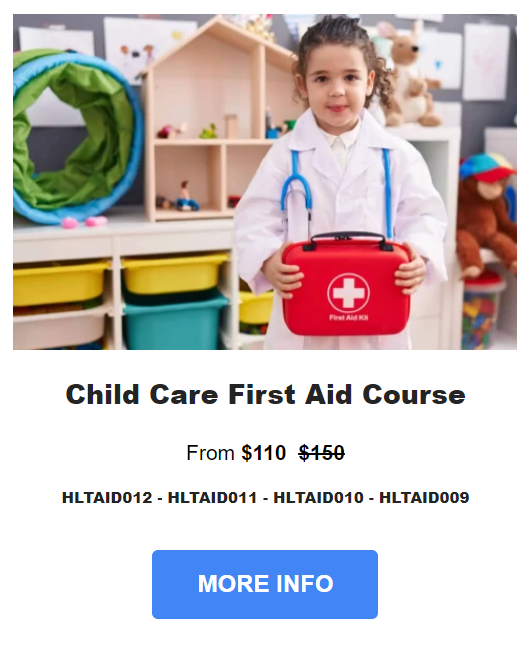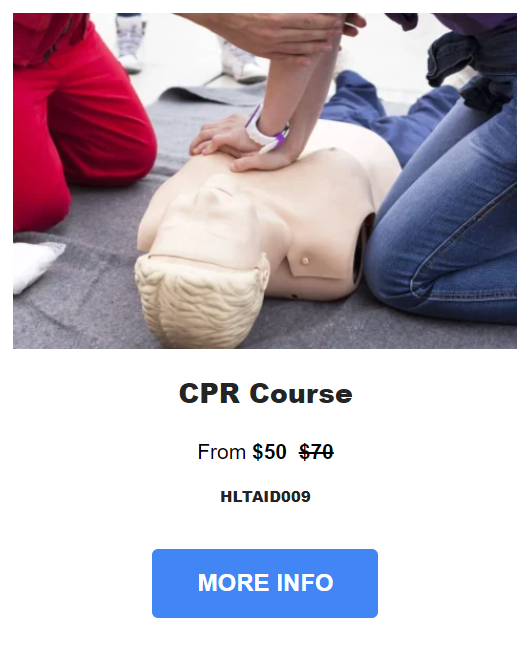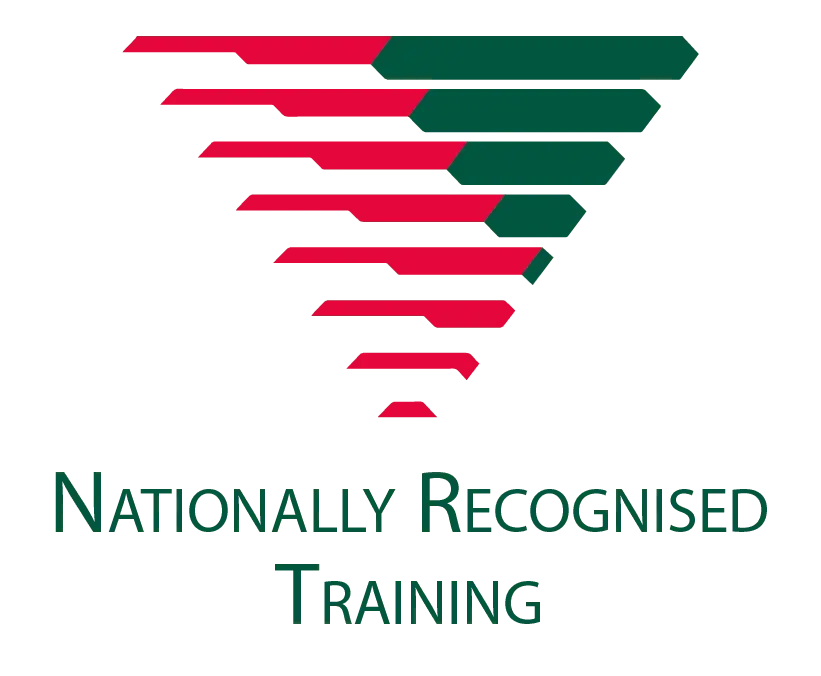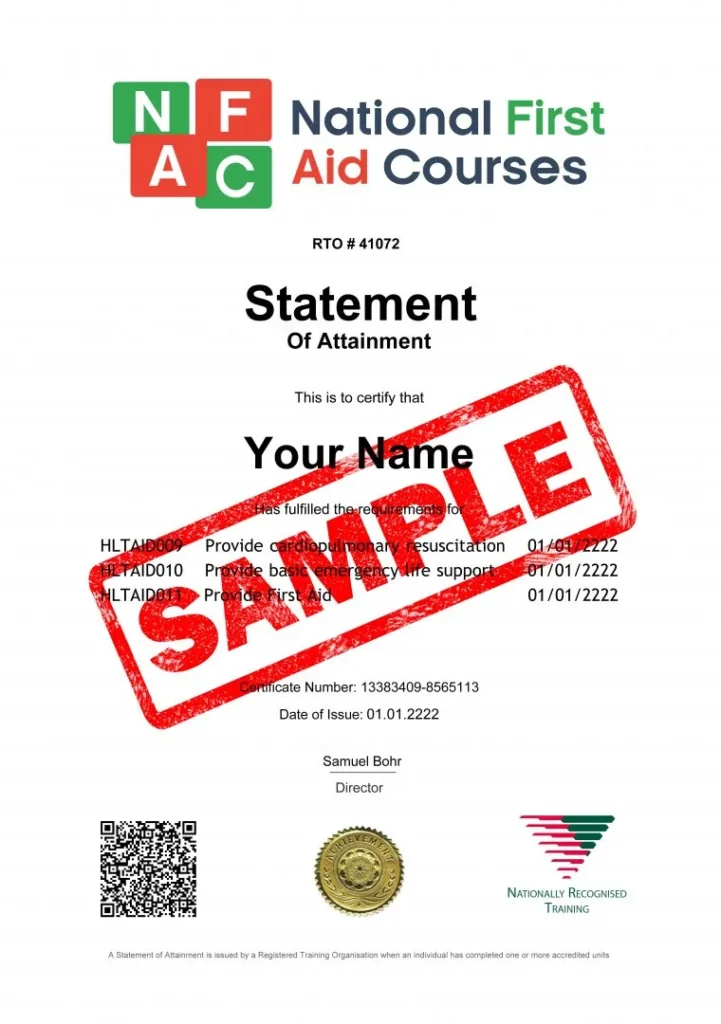
Table of Contents
Key Takeaways
- ✓ Learn Life-Saving Skills: The HLTAID009 CPR course equips you with the knowledge and practical skills to perform effective cardiopulmonary resuscitation in emergencies.
- ✓ Meet Workplace Requirements: Many industries in Australia require CPR certification to ensure employees are prepared to handle critical situations.
- ✓ Comprehensive and Practical Training: This course includes hands-on practice using manikins and detailed theoretical instruction to build your confidence in responding to cardiac emergencies.
- ✓ Nationally Recognised Certification: Upon completion, you’ll receive a certification valid across Australia, meeting all national compliance standards.
- ✓ Quick and Accessible Course Options: Flexible learning formats allow you to complete the certification in as little as one day, fitting your schedule and needs.
Introduction
If someone near you suddenly collapsed and stopped breathing, could you step in and perform life-saving CPR in those critical moments?
Emergencies like these can happen anytime and knowing how to respond can be the difference between life or death.
In Australia, CPR training is a crucial skill that everyone should learn, as emergencies can occur unexpectedly at any time and in any place. Being prepared to respond quickly and effectively can make all the difference in critical situations.
By acquiring CPR skills, you not only equip yourself to handle emergencies but also ensure that you can help those around you when it matters most.
The HLTAID009 – Provide Cardiopulmonary Resuscitation course is specifically designed to equip you with the skills and confidence needed to save lives in those moments when every second counts.
In this comprehensive guide, we’ll walk you through everything you need to know about obtaining your CPR course certification. From understanding the course content to exploring how this training applies in real-world scenarios, we’ve got you covered.
By the end of this article, you’ll have a clear path forward to getting certified, ensuring that you’re prepared to respond when it truly matters.
Understanding the HLTAID009 Course
The HLTAID009 – Provide Cardiopulmonary Resuscitation course is a foundational training program focused on teaching the essential skills needed to respond effectively in cardiac emergencies.
CPR training is more than just a certification — it’s an essential skill set that can make you a crucial first responder in both your personal and professional life.
Whether you’re learning CPR for the first time or renewing your certification, this course offers a thorough understanding of what it takes to provide life-saving care.
By the end of the training, you’ll not only have the theoretical knowledge but also the practical skills needed to confidently step in during emergencies.
CPR Course Elements and Performance Criteria:
| Elements | Performance Criteria |
|---|---|
| 1. Respond to an emergency situation. |
|
| 2. Perform CPR procedures. |
|
| 3. Communicate details of the incident. |
|
| 4. Review the incident. |
|
Course Content and Structure
This course is designed to provide a well-rounded understanding of CPR techniques and how to apply them in real-life situations.
The training is structured to cover both the theoretical aspects and hands-on practice, ensuring that participants leave with practical, life-saving skills.
Here’s a breakdown of the key topics covered in the course:
DRSABCD Action Plan: Learn the crucial steps to take in any emergency, from assessing the scene to administering CPR. The DRSABCD approach (Danger, Response, Send for help, Airway, Breathing, CPR, Defibrillation) provides a structured framework for effectively managing life-threatening situations.
Performing CPR on Adults, Children, and Infants: CPR techniques vary depending on the age and size of the person in need. This course teaches you the correct methods for administering CPR across different age groups, ensuring you’re prepared for any situation.
Using an Automated External Defibrillator (AED): Knowing how to correctly use an AED can drastically increase a person’s chances of survival during cardiac arrest. The course provides detailed training on when and how to deploy an AED.
Recognising and Responding to Cardiac Emergencies: Early intervention is key in cardiac emergencies. You’ll learn how to identify symptoms of heart attacks, strokes, and other critical conditions, along with the best actions to take.
Practical Skills Assessment: The course includes a practical assessment where you’ll demonstrate your CPR skills on a manikin under the guidance of a qualified trainer. This hands-on practice is essential for building confidence and competence in real-world scenarios.
The HLTAID009 course strikes a balance between theory and practice, ensuring you have the knowledge, confidence, and the hands-on skills to act decisively.
Who Should Take the HLTAID009 Course?
CPR training isn’t just for medical professionals—it’s a vital skill for anyone who wants to be prepared to act in an emergency.
This course is designed for a wide range of people across different industries and walks of life.
Here’s a look at who can benefit from this training:
Healthcare Professionals
For those working in hospitals, clinics, or community health settings, CPR certification is often a mandatory requirement. The course ensures that healthcare workers maintain the skills needed to deliver high-quality care in emergencies.
Teachers and Childcare Workers
In the education and childcare sectors, being able to respond to emergencies is crucial. Whether in schools, daycare centers, or early learning environments, educators and carers are responsible for the well-being of children and need to be equipped to handle critical situations.
Coaches and Sports Instructors
Physical activity, whether in schools or sports clubs, can sometimes lead to unexpected health emergencies. CPR training is essential for anyone supervising sports or fitness activities to respond quickly and effectively if a participant’s health is at risk.
Parents and Caregivers
Families and caregivers who look after young children or elderly relatives at home can gain peace of mind by knowing they have the skills to act during a medical emergency.
Workers Required to Have CPR Certification
Many industries require employees to have current CPR certification as part of their job, especially in roles involving health and safety responsibilities. If your employer has instructed you to complete or renew your CPR training, the HLTAID009 course is a recognized certification that meets workplace requirements.
Refresher Training for Compliance
If it’s been a while since you first completed your CPR training, or if your employer has directed you to take a refresher course, renewing your HLTAID009 certification is crucial. Staying current with the latest techniques and guidelines is essential for maintaining your skills and ensuring compliance with workplace standards.
Anyone Interested in Learning Life-Saving Skills
Even if your profession doesn’t require CPR training, having this skill could make all the difference in an unexpected situation, whether at work, at home, or in public spaces.
No matter your background, this comprehensive CPR course equips you with practical knowledge that could one day save a life.
Choosing the Right CPR Course
When it comes to CPR training, not all courses are created equal.
Selecting the right training course is essential to ensure you receive high-quality training that meets both your personal and professional needs.
Here are key factors to consider when choosing a CPR course:
Accreditation and Recognition
Make sure the course is nationally recognised and accredited by a reputable training provider who is a Registered Training Organisation (RTO).
The course should meet industry standards and be recognised across Australia, especially if your certification is required for work.
Course Delivery Format (In-Person vs. Online)
While some components of CPR training can be completed online, the practical skills needed for effective CPR requires face-to-face training and assessment.
Face-to-face CPR training is the most effective format because it allows for hands-on practice and immediate feedback from instructors, ensuring you develop the confidence and skills necessary to respond effectively in real-life emergencies.
Certification and Renewal
Upon completing the HLTAID009 course, you will receive a nationally recognised CPR certificate.
In Australia, while the certificate is typically valid for three years, the Australian Resuscitation Council (ARC) recommends that CPR skills be refreshed every 12 months to ensure they remain current and effective.
To achieve this certification, you must undergo both theoretical training and practical in-person assessment. The practical component ensures that you can demonstrate the required CPR skills effectively.
Renewal Requirements
To comply with ARC guidelines and keep your skills sharp, you should complete a CPR refresher course annually.
This refresher course updates you on any changes in CPR guidelines or techniques and reinforces your practical skills.
How to Maintain Certification
Staying current with your CPR certification and refresher requirements is crucial for meeting workplace or regulatory standards.
If your employer requires up-to-date CPR certification, ensure you schedule your refresher courses as needed to avoid any lapse in your credentials.
Key Statistics on CPR Training in Australia
The following stats highlight the critical need for CPR training in Australia:
- Every day, nearly 70 Australians suffer a cardiac arrest outside of a hospital, yet only 10% survive. This low survival rate is largely attributed to delays in receiving critical interventions such as CPR, defibrillation, and emergency medical treatment.
- Early bystander CPR is one of the most critical interventions for improving cardiac arrest survival rates. Research shows that survival is doubled when cardiopulmonary resuscitation (CPR) is administered by bystanders before emergency services arrive.
- For every minute that CPR is delayed, the chances of survival decrease by approximately 10%. Promptly administering CPR can significantly enhance the likelihood of a positive outcome, making it essential for bystanders to act quickly and confidently in such situations. The faster CPR is initiated, the better the chances of preserving brain function and overall survival.
Real-Life Applications of CPR First Aid Skills
CPR skills are vital for responding effectively in emergencies, transforming ordinary individuals into capable first responders.
Mastering these skills ensures that you are prepared to handle critical situations with confidence and make a significant impact on the lives of those around you.
Below are some real-world scenarios that describe how your CPR skills can be applied in critical medical emergency situations:
Workplace Emergencies
Scenario: During a busy work day, a colleague suddenly collapses and becomes unresponsive.
There are no immediate signs of breathing, and the room is in a state of panic.
Response: You quickly assess the situation, ensuring the area is safe. You then initiate CPR by performing chest compressions and, if available, use an AED.
You follow the CPR guidelines meticulously, checking for signs of breathing and providing rescue breaths as needed.
Impact: Your swift and effective response can help restore the colleague’s breathing or heartbeat, potentially saving their life.
Your actions will minimise the time without circulation, which is crucial for their survival and recovery.
Sports and Recreational Activities
Scenario: During a community soccer game, a player collapses on the field, unresponsive and not breathing.
The game halts, and onlookers are unsure how to proceed.
Response: As a coach, teammate, or spectator with CPR training, you immediately step in and start chest compressions.
You instruct others to call emergency services and provide clear directions to the team to ensure help is on the way.
Impact: Your prompt action increases the player’s chances of survival and recovery.
By providing immediate care, you help stabilise the player’s condition until professional medical assistance arrives, potentially preventing long-term damage or death.
Home and Family Situations
Scenario: At home, your young child suddenly starts choking on a small object and becomes unable to breathe.
The situation is urgent, and immediate action is required.
Response: You quickly assess the child, perform the Heimlich maneuver if the child is conscious or initiate CPR if they are unresponsive.
You stay calm, following the CPR guidelines, and call for emergency help while continuing to provide care.
Impact: Your ability to perform CPR or the Heimlich maneuver effectively can dislodge the object or restore breathing, preventing a potentially fatal situation.
Your actions provide critical intervention that keeps the child safe until further medical assistance arrives.
Public Spaces
Scenario: At a crowded shopping center, a person nearby collapses suddenly and falls unconscious. Bystanders are unsure of how to help.
Response: With your CPR training, you move quickly to the person, assess their condition, and begin CPR while others call for emergency services.
You use an AED if available, following the proper steps to provide effective care.
Impact: Your intervention helps maintain the person’s circulation and breathing, increasing their chances of survival.
Your actions in a public setting not only assist the individual but also reassure others and contribute to a safer environment.
Natural Disasters
Scenario: During a severe bushfire, the smoke and heat lead to a person collapsing from smoke inhalation.
They are unresponsive and not breathing properly in a chaotic environment.
Response: Drawing on your CPR training, you quickly assess the situation to ensure it is safe to approach the individual.
You check their responsiveness and breathing, and upon finding them unresponsive, you begin CPR immediately while instructing others to call for emergency services.
Impact: Your prompt intervention helps maintain circulation and oxygen flow to vital organs, significantly increasing the person’s chances of survival.
By taking action, you not only assist the individual in distress but also alleviate pressure on emergency services by providing immediate care, allowing them to focus on other critical situations.
Common Myths About CPR Training
Despite its critical importance, CPR training is often surrounded by misconceptions that can deter people from learning these essential skills.
Let’s debunk some common myths and clarify why CPR training is crucial for everyone:
Myth 1: Only Healthcare Professionals Need CPR Training
Reality: While healthcare professionals are trained in CPR as part of their job, this skill is valuable for everyone.
Emergencies can happen anywhere and to anyone. Whether you’re a parent, teacher, coach, or just an active community member, having CPR training equips you to respond effectively in critical situations.
CPR training is not just for professionals; it’s for anyone who wants to be prepared to save lives.
Myth 2: CPR Is Only Useful for Cardiac Arrest
Reality: CPR is often associated with cardiac arrest, but it’s also crucial in other emergencies. For instance, CPR is used for choking victims who lose consciousness, drowning victims, and anyone who has stopped breathing. The ability to perform CPR can be the difference between life and death in various scenarios, not just those involving heart issues.
Myth 3: You Can Hurt Someone by Performing CPR
Reality: While it’s true that performing CPR may cause some injury, such as broken ribs, the alternative — doing nothing is far worse.
The risk of causing minor injuries is outweighed by the potential to save a life.
Emergency medical responders are trained to deal with the aftermath, so your primary concern should be providing immediate care.
Myth 4: You Need to Be Strong to Perform Effective CPR
Reality: Effective CPR is about proper technique, not strength.
The key is using the correct hand placement and compression depth to maintain blood flow to the brain and heart.
With the right training, anyone can perform CPR effectively, regardless of their physical strength.
The training focuses on technique and proper execution, making it accessible to people of all fitness levels.
Myth 5: CPR Training Is Too Complicated to Learn
Reality: Modern CPR training courses are designed to be user-friendly and practical.
They use simplified, step-by-step instructions and hands-on practice to ensure that learners feel confident in their skills.
Many courses offer certification upon completion, proving that with a bit of time and effort, anyone can learn and apply CPR techniques effectively.
Myth 6: You Don’t Need CPR Training If You Have an AED
Reality: An AED is a valuable tool that can enhance your ability to respond to a cardiac emergency, but it does not replace the need for CPR training.
AEDs provide instructions, but knowing how to perform CPR is essential for the complete management of an emergency.
Combining CPR with AED use increases the chances of survival and ensures comprehensive care.
Myth 7: CPR Training Is Only for Certain Professions
Reality: CPR training is beneficial for people in a variety of professions, not just those in healthcare or emergency services.
For example, teachers, childcare workers, sports coaches, and even parents can benefit from CPR skills.
These professions and roles often involve scenarios where quick response is crucial, and having CPR training can make all the difference.
Preparing for Your CPR Course Training
By preparing adequately for your CPR course, you set yourself up for success and ensure that you are ready to learn and apply these life-saving skills.
Proper preparation will help you feel more confident and capable, making the training experience both effective and rewarding.
Here’s how you can prepare to ensure you make the most of your CPR course experience:
What to Bring
Identification: Bring a form of photo ID, such as a driver’s license, passport, or student ID.
Notepad and Pen: Taking notes during the course can help reinforce your learning and serve as a reference for future practice.
Comfortable Clothing: Wear comfortable clothes that allow for movement, as you will likely be practicing hands-on skills. Closed-toe shoes are also recommended, especially for practical training.
Water and Snacks: Staying hydrated and energised is essential, especially if the course lasts several hours. Bring a water bottle and light snacks to keep your energy levels up.
How to Prepare Mentally and Physically
Familiarise Yourself with Course Content: If possible, review the course syllabus or any pre-course materials provided by the training organisation (such as our CPR Course learning guide). Understanding what topics will be covered can help you feel more prepared and confident.
Remain Calm: If you feel anxious about the training, consider practicing relaxation techniques such as deep breathing or visualisation. This can help calm your nerves and improve your focus during the course.
Stay Open-Minded: Approach the training with a positive attitude and a willingness to learn. Remember that everyone is there to improve their skills, and it’s okay to ask questions or seek clarification on topics you find challenging.
Communicate with your course provider if you need assistance: If you have any physical limitations, inform the instructor beforehand, as they can provide guidance on how to adapt certain techniques to suit your situation.
Frequently Asked Questions (FAQs)
Here are some common questions about CPR course training, certification processes, and course content (along with their answer)s:
What is the duration of the HLTAID009 CPR course?
Answer: The HLTAID009 CPR course typically takes about 3-4 hours to complete.
This includes both theoretical instruction and practical skills assessment.
The exact duration may vary depending on the provider and the specific course format.
Can I complete the CPR course entirely online?
Answer: While some components of the CPR course may be available online, a full CPR certification course typically requires in-person training for the practical skills assessment.
Hands-on practice and assessment is a requirement for learning proper techniques, ensuring competency, and receiving a nationally recognised certification.
Is it possible to take the course if I have a medical condition?
Answer: If you have a medical condition, it’s important to inform the training provider before enrolling.
They can provide guidance and make necessary accommodations.
Many courses are designed to be accessible to individuals with varying physical abilities.
How is the practical assessment conducted?
Answer: The practical assessment involves demonstrating CPR techniques on mannequins under the supervision of a qualified instructor.
You will be evaluated on your ability to perform compressions, rescue breaths, and use an Automated External Defibrillator (AED) effectively.
Do I need to purchase any special equipment for the course?
Answer: Generally, the training provider supplies all necessary equipment for the course, including mannequins and AED trainers.
You are not typically required to purchase any special equipment yourself.
Can I use my CPR certification for job applications or professional requirements?
Answer: Yes, CPR certification is often a requirement for various professions.
It can enhance your resume and demonstrate your commitment to safety and emergency preparedness.
What should I do if I forget some of the CPR techniques after the course?
Answer: If you forget some techniques, review your course materials or use online resources to refresh your memory.
Many training organisations also offer refresher courses and practice sessions to help you stay confident in your skills.
Conclusion
In today’s world, having the skills and confidence to respond effectively in an emergency is more crucial than ever.
The HLTAID009 CPR course equips you with essential life-saving techniques, empowering you to act swiftly and decisively when it matters most.
From understanding the fundamentals of the DRSABCD action plan to mastering the use of an Automated External Defibrillator (AED), this comprehensive course prepares you to handle a wide range of cardiac emergencies with competence and confidence.
Whether you’re a working professional or just someone committed to the well-being of those around you, this training is a vital step in safeguarding lives.
By obtaining your HLTAID009 certification, you not only comply with professional and regulatory requirements but also make a meaningful contribution to emergency preparedness in your community.
Your ability to perform CPR effectively can make the difference between life and death in critical moments.
Take the Next Step: Enrol in a First Aid Course Today!
Ready to gain the essential skills and knowledge to respond confidently in emergencies?
Look no further than National First Aid Courses — Australia’s leading First Aid Course provider.
As a Registered Training Organisation (RTO 41072), we guarantee you will receive the highest standard of training.
We offer official, accredited, nationally recognised first aid training at affordable prices.
Our comprehensive CPR Course is designed to equip you with the knowledge and certifications needed to provide life-saving assistance in emergency situations.
With face-to-face instruction, same-day certificates, and 8 convenient locations across New South Wales, we make it easy for you to become a certified first aider.
Enrol in one of our upcoming CPR courses and secure your spot today!
Author Bio:

Jacqueline Lisa
Manager and Accredited First Aid Trainer at National First Aid Courses (NFAC)
With over a decade of experience in the childcare and aged care industries, Jacqueline has dedicated her career to applying her First Aid knowledge in real-world settings. As an accredited First Aid trainer and manager at National Courses PTY LTD, Jacqueline is committed to delivering nationally recognised First Aid and CPR courses across Australia. She combines her hands-on experience with a passion for teaching, empowering others with the critical skills needed to make a difference in emergency situations.
Connect on Social Media
Contact Us For Assistance
- 1300 623 613
- admin@nfac.edu.au
- Monday to Friday: 8:30 am – 4:30 pm
Share This Article:
Related Articles:
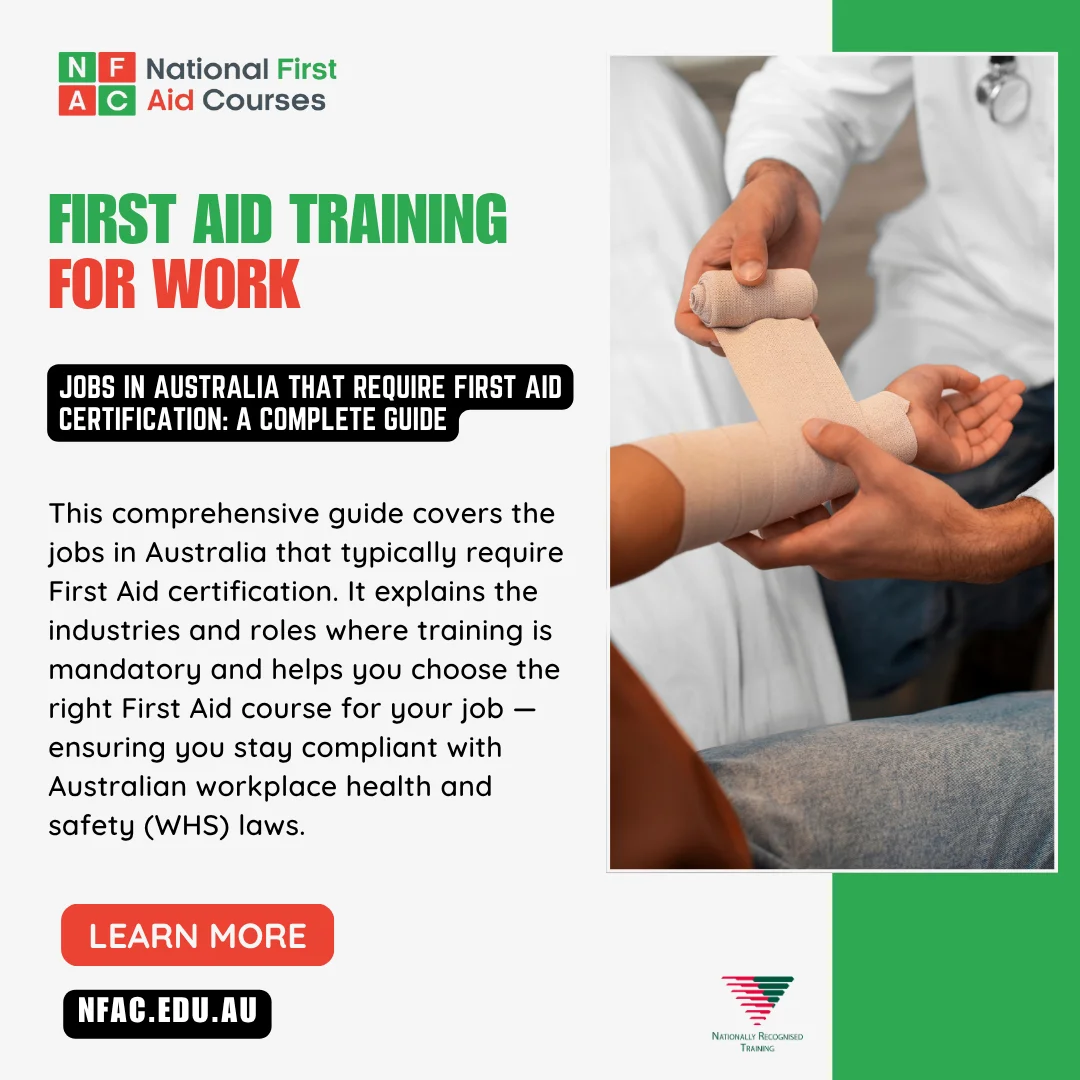
Jobs in Australia That Require First Aid Certification: A Complete Guide
In this guide, we’ll break down the jobs and industries in Australia that require First Aid certification, from construction and healthcare to childcare, mining, and more. You’ll learn which roles have mandatory training requirements, how often certificates need to be refreshed, and which course — Provide First Aid, CPR, or Childcare First Aid — applies to your workplace. Plus, we’ll explain how staying certified keeps you compliant with WHS laws and gives you the confidence to act when it matters most.

Popular Summer Jobs in Australia: How First Aid Training Can Get You Hired
In this article, we look at why First Aid and CPR training is a must-have skill for anyone volunteering at summer events across Australia. From community festivals to sports carnivals and charity fundraisers, we cover the safety expectations, heat-related risks, and the accredited training that ensures you’re ready to act fast when emergencies strike in the summer heat.
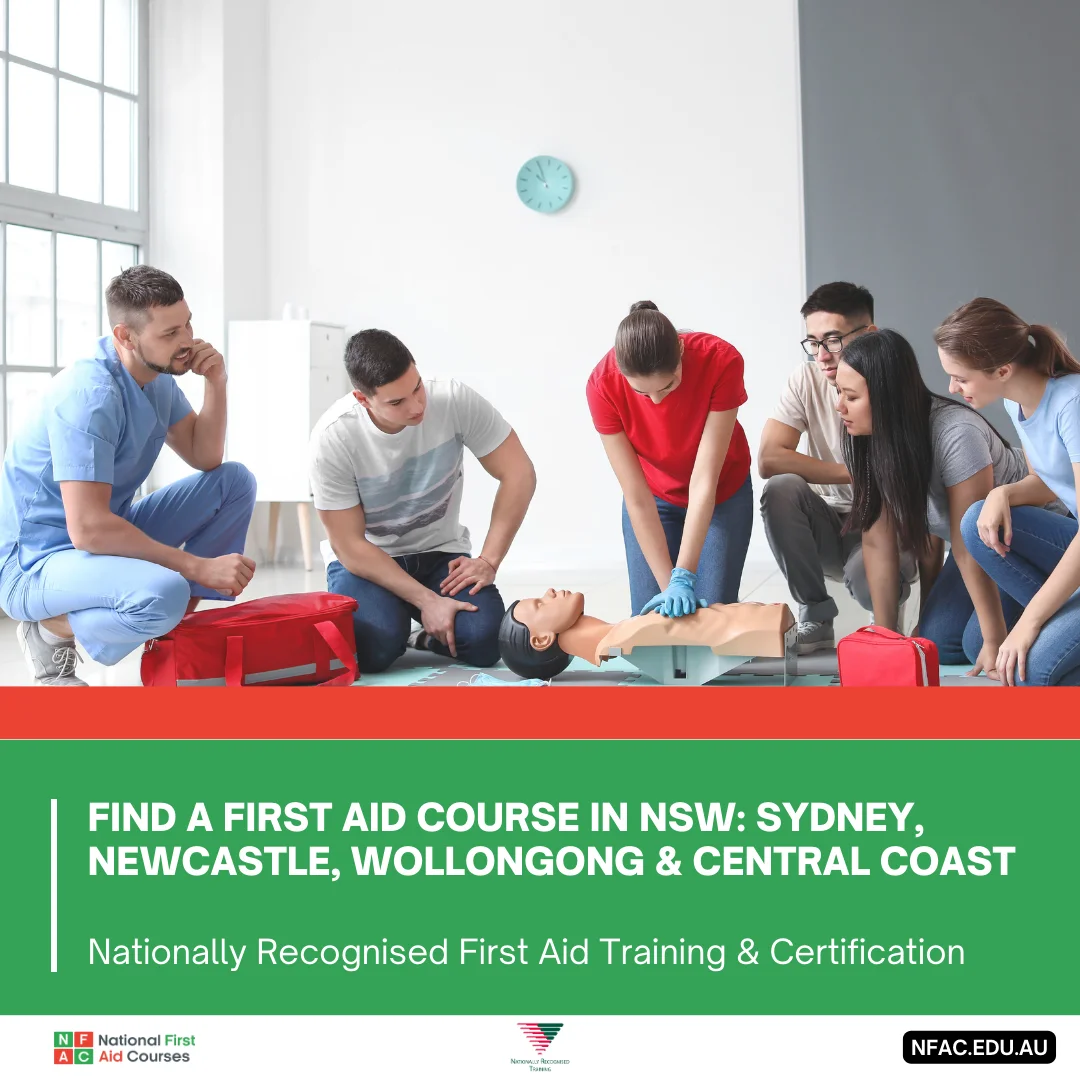
Find a First Aid Course in NSW: Sydney, Newcastle, Wollongong, Central Coast & More
In this guide, we’ll show you exactly how to find the best First Aid course in New South Wales — whether you’re in Sydney, Newcastle, Erina, or Wollongong. From understanding accredited training requirements to comparing face-to-face vs online options, you’ll learn what matters most before booking. Plus, we’ll share tips for choosing a provider that guarantees practical, hands-on skills you can trust in an emergency.
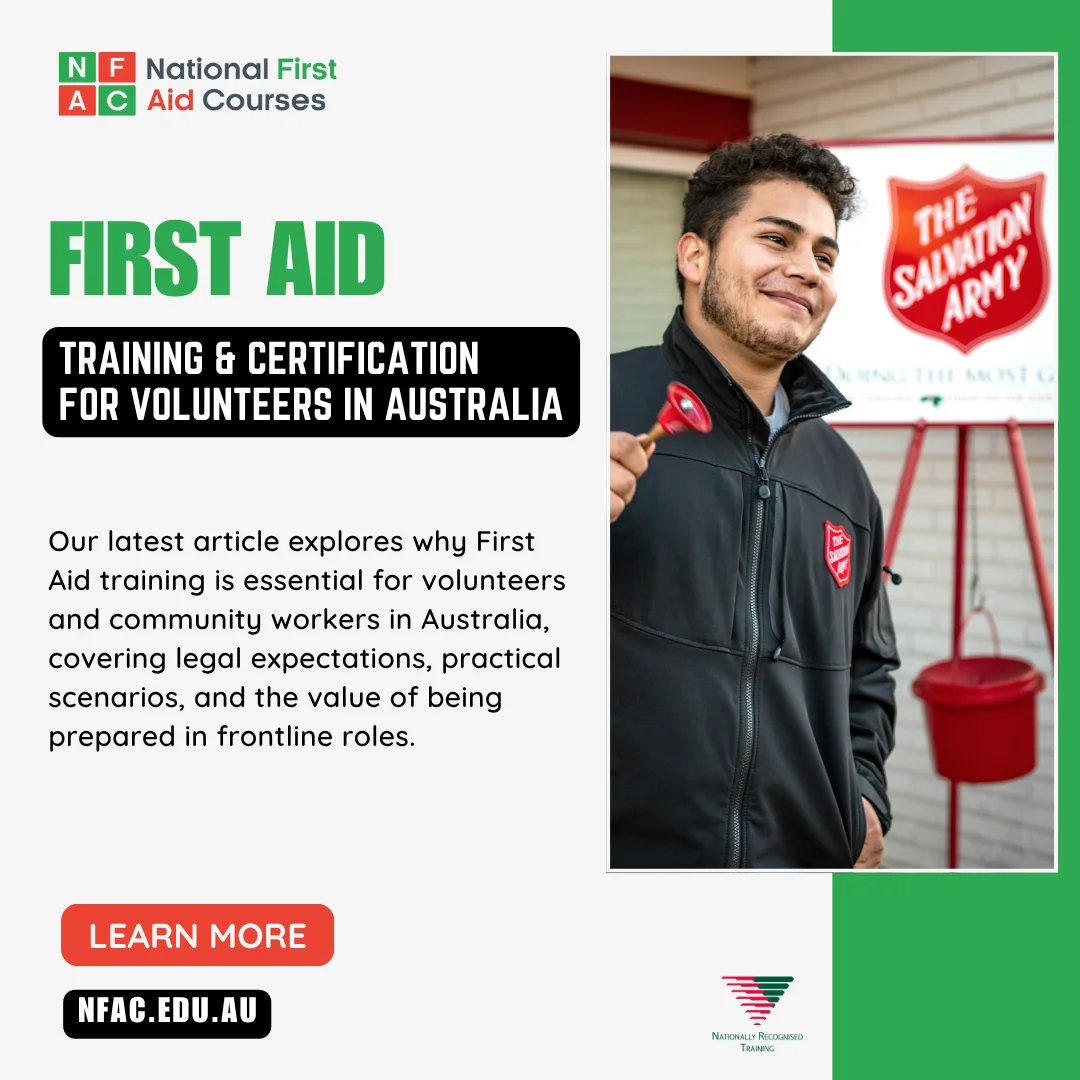
Do Volunteers and Community Workers in Australia Need First Aid Training? What the Rules Say
In this article, we explore why First Aid and CPR training is becoming essential for volunteers across Australia — not just a bonus. Whether you’re helping out at a school, charity event, or aged care centre, we break down the legal requirements, expectations from organisations, and the nationally recognised training that prepares you to step in when it counts.

